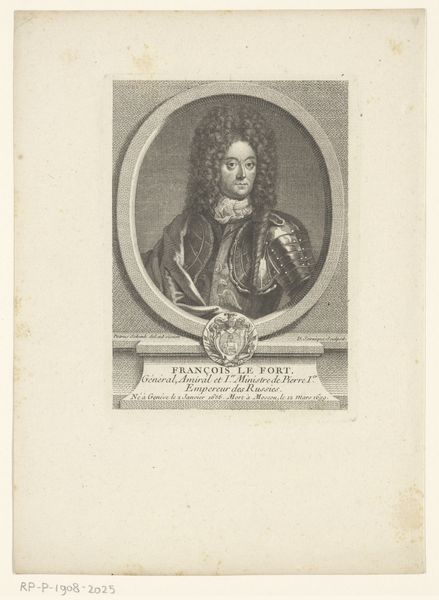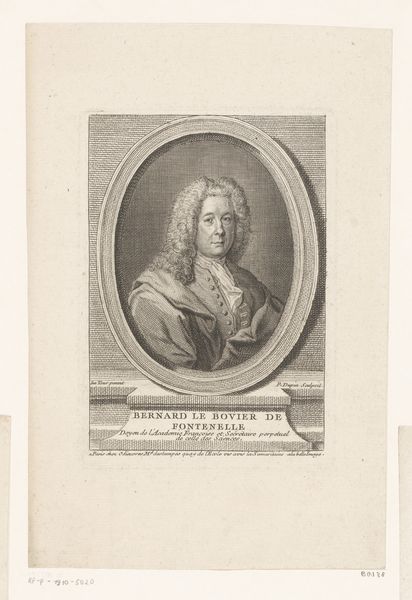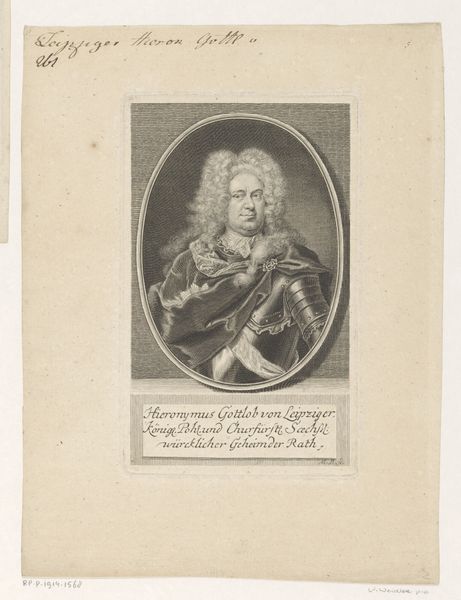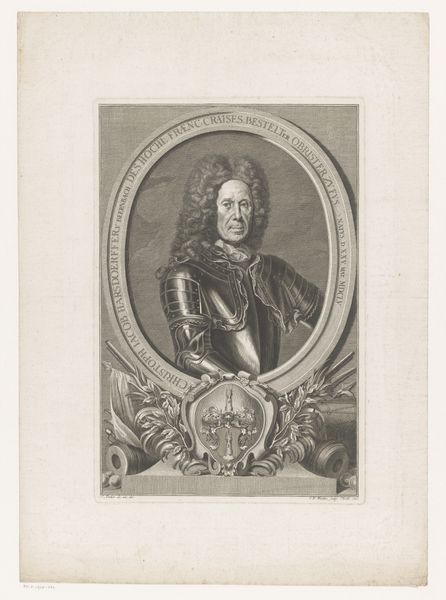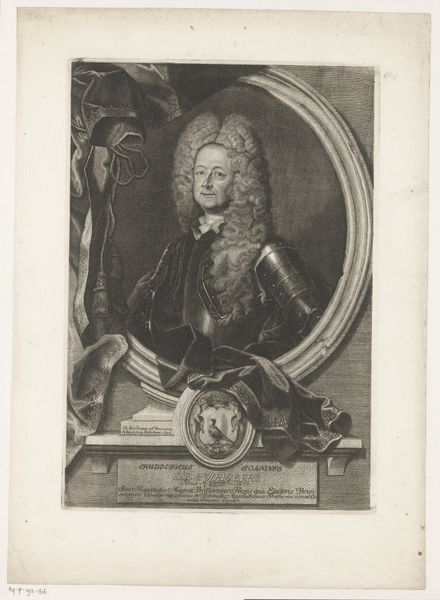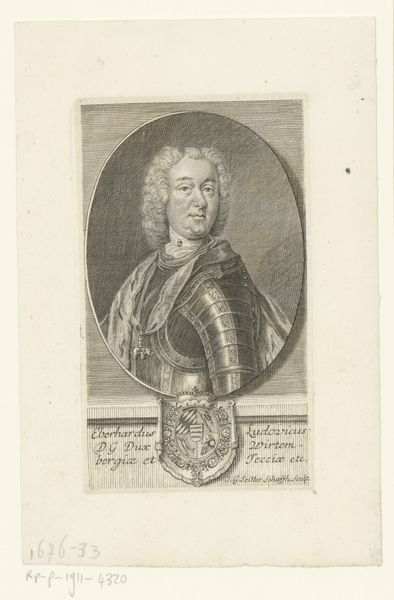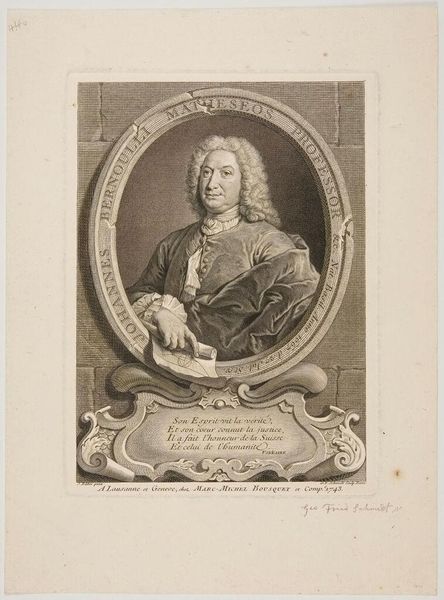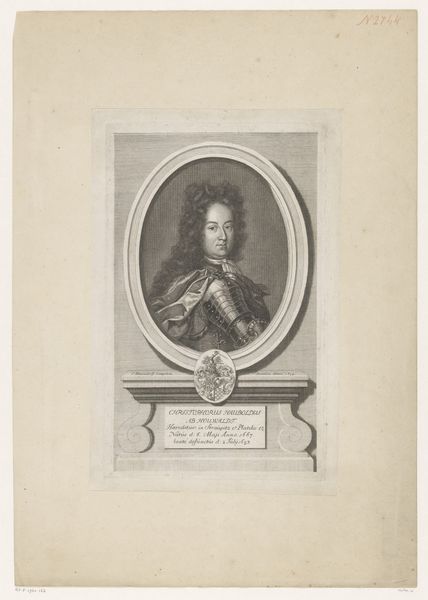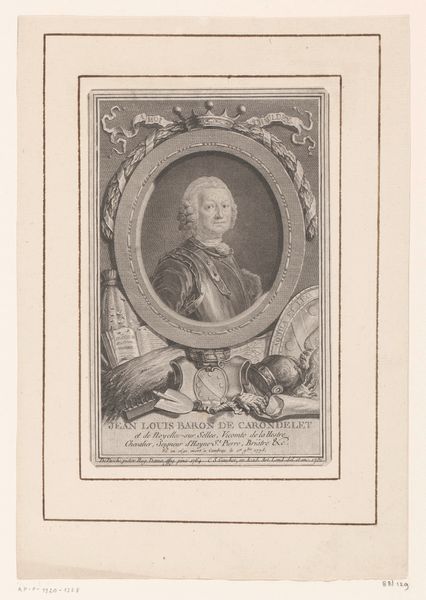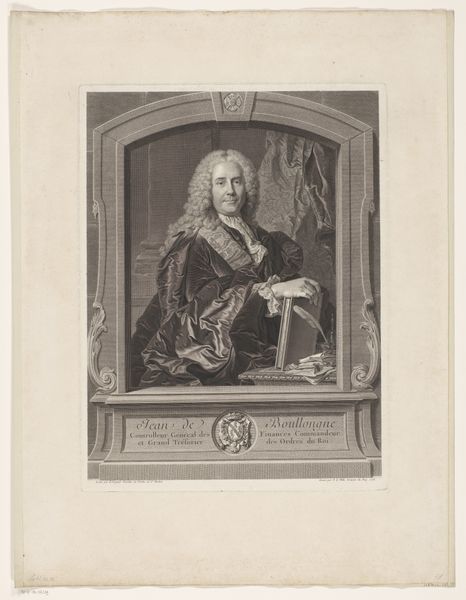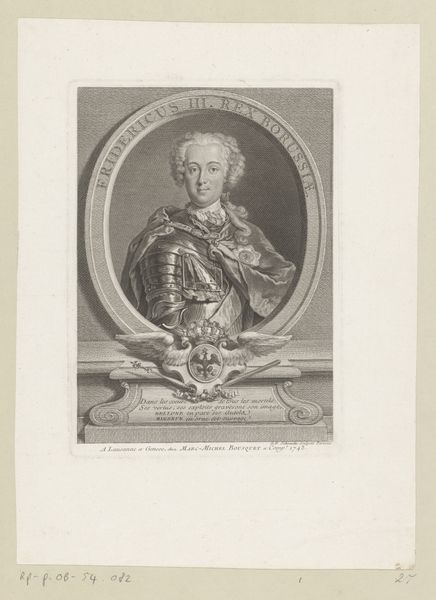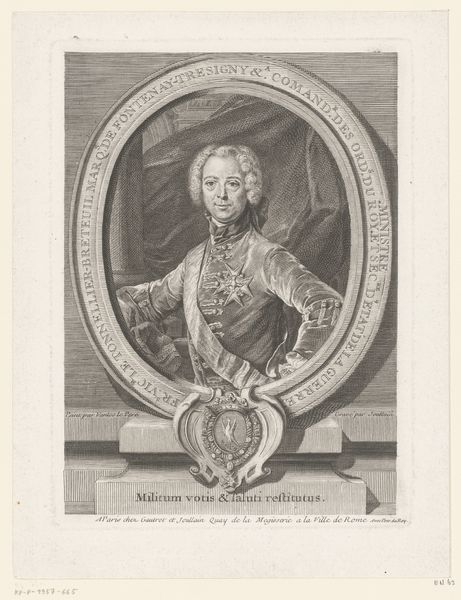
print, engraving
#
portrait
#
baroque
# print
#
old engraving style
#
line
#
engraving
Dimensions: height 150 mm, width 110 mm
Copyright: Rijks Museum: Open Domain
Curator: Allow me to introduce you to a print by Jacques Nicolas Tardieu, “Portret van Léonor Marie du Maine du Bourg,” created sometime between 1755 and 1765 using engraving techniques. Editor: My first impression is the sharp, almost austere contrast. The swirling wig and ornamented breastplate are captivating, framed by a relatively subdued, simple oval. It feels…rigid, yet ornate. Curator: Precisely. The use of line engraving allows for such minute detail in textures – observe how the armour seems to gleam, and how the very texture of the sitter’s hair is suggested by subtle gradations in line weight and density. Note how the texture within the oval, contrasted against the solid white ground, emphasizes depth. Editor: Right, but beyond the formal qualities, it’s vital to contextualize this representation of Léonor Marie du Maine du Bourg. As Maréchal de France, he held significant military power during a period defined by immense social stratification and conflict. How does the armour speak to broader cultural norms regarding masculinity, power, and warfare at this time? Curator: Indeed, one might see the inclusion of armour as a visual signifier that amplifies not only rank and profession, but as an index of prevailing ideologies. See, too, how the artist captures his position and power, while also utilizing a certain elegance. His hand gently rests upon what appears to be a baton. A visual paradox to behold. Editor: It is, perhaps intentionally, posed against that seemingly plain, neutral oval. I question that this simplicity of this engraving's background could highlight both individual authority as well as contribute to a broader cultural glorification of militarism during a tumultuous era for the aristocracy. The print's visual precision is undeniable, but we shouldn't overlook how it reflects the priorities of the elite, their public image, and associated ideals. Curator: Your observation reminds us of the dynamic intersection of technical skill and socio-historical context when assessing art, offering perspectives that continually reshape how we understand artistic creation. Editor: Absolutely, prompting me to reflect upon the crucial, continuous interplay of form and context, illuminating our perception of the print within multifaceted interpretations.
Comments
No comments
Be the first to comment and join the conversation on the ultimate creative platform.
